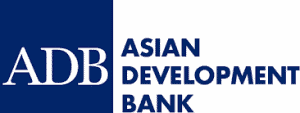The overall trade deficit improved in the financial year (FY) 2016-17 dropping to Nu 31.14bn from Nu 37.48bn in the previous year, according to the Royal Monetary Authority’s annual report 2016-17.
The trade deficit improvement is mainly attributed to higher exports of electricity to India and minerals and base metals to others countries.
Although deficits continued to persist in the services and primary income accounts, secondary income surplus increased from Nu 9.55bn to Nu 11.63bn mainly on account of the Government Of India excise duty refund of Nu 2.92bn.
Trade deficit with both India and countries other than India improved by 15.84% and 20.58% respectively in FY 2016-17.
The report also states that exports to India increased by 9.26% mainly on account of hydropower exports. The increase is attributed to favorable hydrological flows, additional generation from the Tsibjalumchhu diversion scheme to Tala Hydropower Plant, and revision of export tariff for Kurichhu and Tala from Nu 1.98/unit to Nu 2.12/unit effective from December 2016. However, electricity import from India declined by 3.08%.
Similarly, with the increase in export of mineral products and base metals, exports to countries other than India increased by 45.07% while imports declined by 3.95% during the fiscal year.
The report also states that total exports in 2016 amounted to Nu 35.26bn with hydropower being the highest export at a total percentage share of 36.96%.
With the increase in electricity export by 22.42% and with the simultaneous fall in hydro-related merchandise imports, the trade deficit with India improved from Nu 28.88bn to Nu 24.30bn in 2016-17.
“Bhutan had a negative overall balance of Nu 942.83mn with countries other than India for FY 2016-17. Convertible currency reserves decreased from US$ 811.98mn to US$ 716.54mn between June 2016 and June 2017,” states the report.
Imports for 2016 amounted to Nu 67.36bn. Imports of fuel increased in 2016 with the import of diesel accounting for 8.58% of the total imports at Nu 5.78bn. Imports related to hydropower projects and industries along with motor spirit (gasoline including aviation spirit petrol), motor vehicle, food imports such as rice, cooking oil and milk products continue to feature in the top 20 commodity list.
Bangladesh continues to remain the second highest export destination for Bhutan followed by the United States. Nepal, Germany, Hong Kong, the Netherlands and Italy also appear in the top 20 export destination for Bhutan in 2016. India, Thailand and China are the top three import sources for Bhutan in 2016.
At the end of the fiscal year, gross international reserves slightly decreased to US$ 1,106.72mn from US$ 1,118.77mn as of end-June 2016.
In the exchange rate developments, the Ngultrum averaged Nu 66.43 per US $ in the fiscal year, depreciating by 0.17% from the previous year.
In June-to-June comparisons, the Ngultrum appreciated by 4.44% from averaging Nu 67.3 against the US$ in June 2016 to Nu 64.44 in June 2017.
Dechen Dolkar from Thimphu












